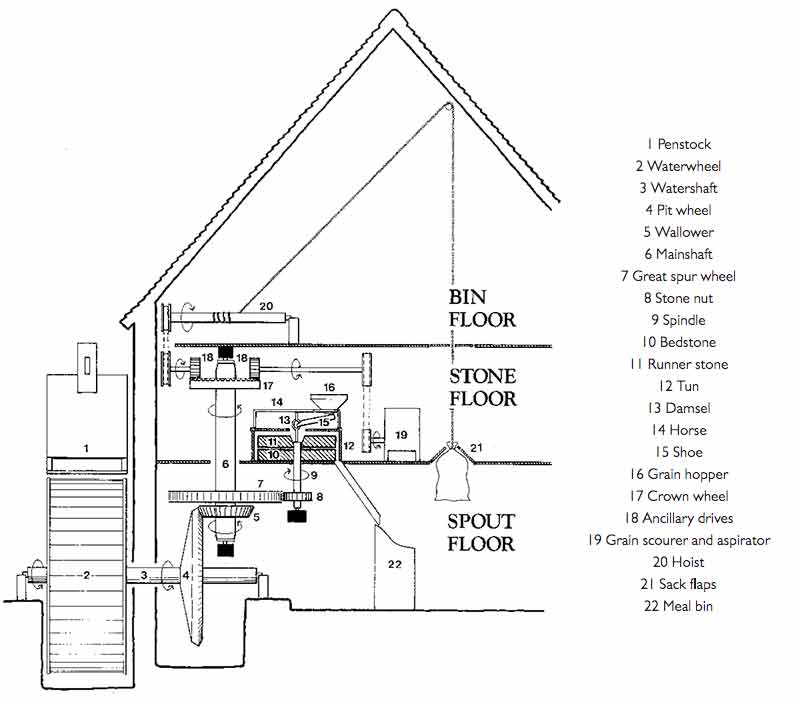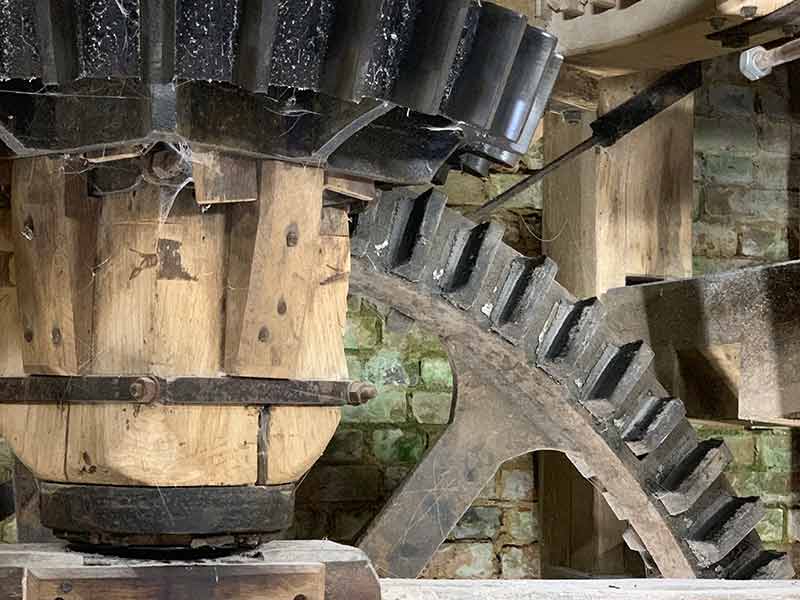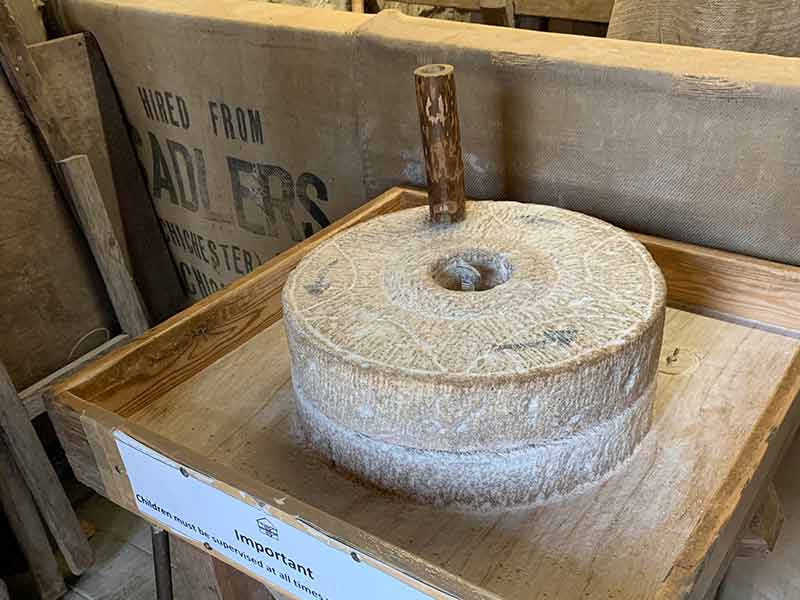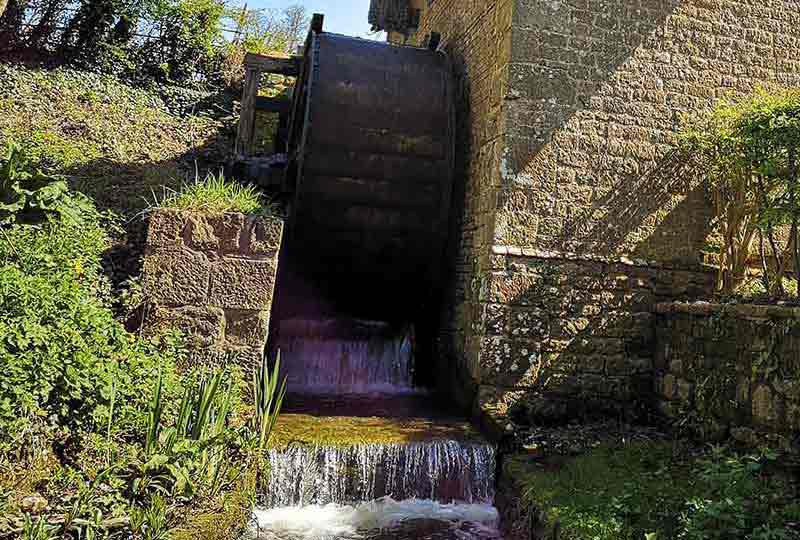
This mill is for grinding corn, for flour and animal feed. The overshot waterwheel provides power for two pairs of millstones, a grain cleaner and a sack hoist.
The oldest parts of the building probably date from the 17th century, but many changes were made to the machinery and the building during its working life, which lasted until the 1930s. Flour produced in the mill can be purchased there and in the Museum shop.
Although the sites of many mills remained unchanged for several centuries, the buildings and machinery were subject to constant alteration. The Lurgashall mill is a typical example of this process.
Share
Overview
Dates From
17th century
Dismantled
1973
Reconstructed
1977
Original Location
Lurgashall, Sussex
Building History
Background Information
The basic structure, which is of stone from the Lower Greensand, probably dates from the 17th century, but the building seems to have been partly rebuilt and much modified at least once before the 19th century. The roof was given a gable at one end and a half-hip at the other to provide more storage space.

The Lurgashall watermill on its original site before dismantling.
At one time the mill had two waterwheels in tandem, each wheel driving its own independent set of machinery, and the groove marks of the second wheel can be seen in the stones of the mill wall against which the wheel turned. By the time the mill stopped work in the 1930s, however, only the tail waterwheel was in use, the other having long since been dismantled.
The present cast-iron waterwheel was made by Chorley, the Cocking iron-founder, for Costers Mill at West Lavington. After Costers Mill closed down it was brought to Lurgashall and installed by millwright James Lee, of Midhurst, replacing the earlier wooden wheel. It is twelve feet in diameter and when the mill is grinding it turns at about 6rpm, each turn using about 200 gallons of water.

The mill was presented to the Museum by the Leconfield Estate in 1973. Before it could be rebuilt on the Museum site, it was necessary to excavate and build an upper and lower mill pond with the requisite height differential of about twelve feet.
This, and the careful dismantling and re-erection of the mill building stone by stone, was completed by the end of 1977. The restoration of the machinery and interior took a further three years.

Unfortunately there is not an adequate natural water supply on the Museum site to maintain the level in the upper pond when the mill is working. To overcome this, a powerful water pump re-circulates the water back to the upper pond.
How the Mill Works
The waterwheel drives the horizontal wooden watershaft on which is mounted the pit wheel (see diagram below). This is a cast-iron bevel gear that meshes with a smaller cast-iron gear, called the wallower, mounted on the vertical wooden mainshaft. The gearing ratio between the watershaft and the mainshaft is about 1:3.

Diagram showing how the Mill works.
Above the wallower is mounted a larger wheel, the great spur wheel, which is made entirely of wood. This meshes with the cast-iron stone nuts (small pinions) that drive the grindstones through vertical shafts (spindles), the gearing ratio being 1:4½. Overall, the gearing makes the stones rotate 13½ times for each rotation of the waterwheel, the average speed of the stones being 80rpm.

The spindle rotates the upper stone, the runner, above the fixed bedstone. Grain is fed from the hopper into the shoe, which is vibrated by the damsel, shaking grain into the centre of the runner stone. The grinding action moves the grain outwards to the edge of the stones, and the finished product falls into the meal bins on the ground floor.

At the top of the mainshaft is a further wheel, the crown wheel, which runs two ancillary drives. One of these powers a sack hoist in the top floor of the mill, a slack belt operating as a primitive clutch. The other drives a flour dresser that separates the whole meal into bran and unbleached white flour.

Lurgashall Mill quern.
Top 3 Interesting Facts

A Working Watermill
The oldest parts of this mill date from the 17th century, and the mill was in use until the 1930s.

Changes to the Mill
Over time, as with many working buildings, there were changes to the machinery and building structure to keep it working.

Millers & Flour
The mill was for grinding corn for flour and animal feed. Both are important staples so the miller held an important, trusted role.







